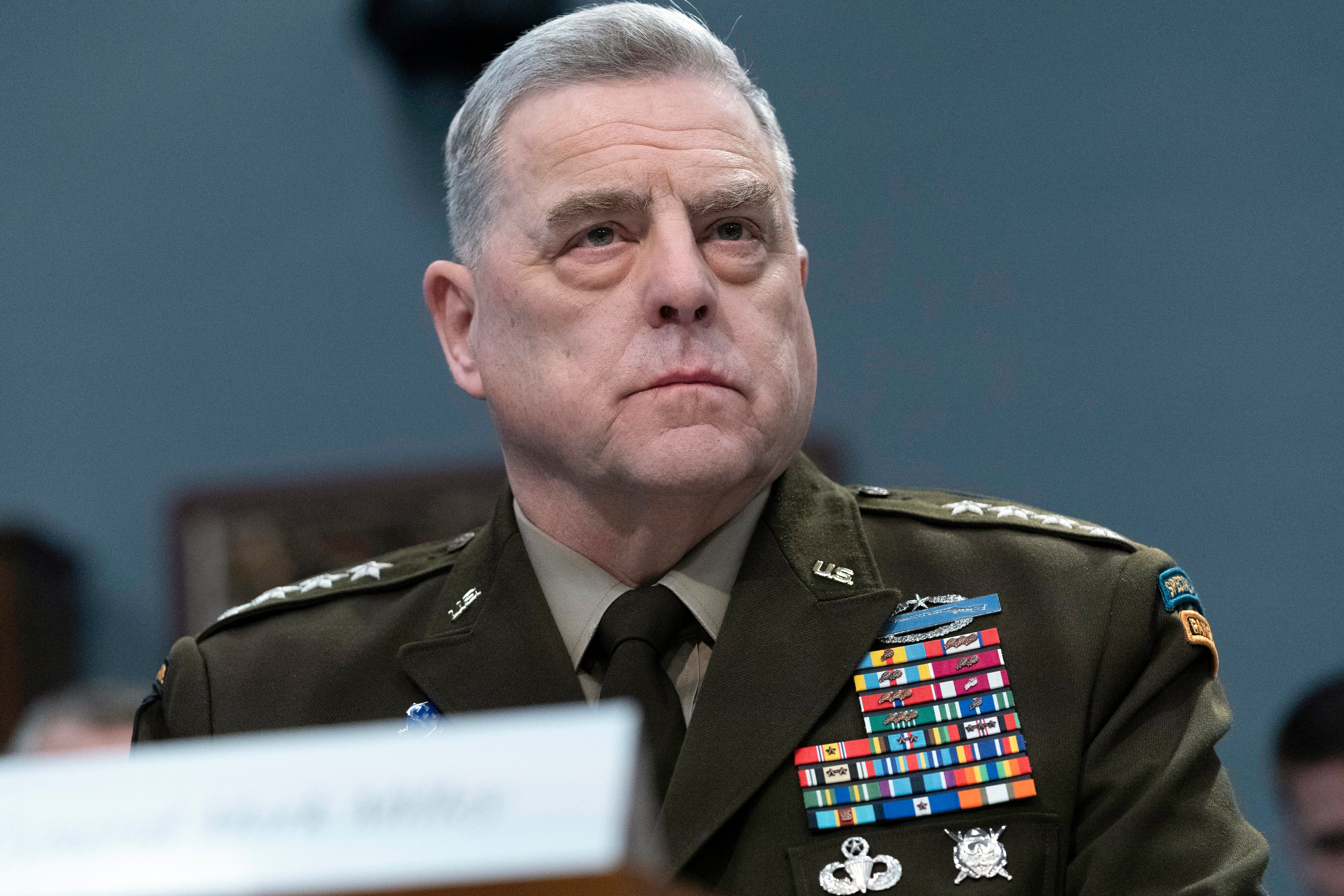The Pentagon has come under heavy scrutiny for its actions — and its inaction — on Jan. 6, 2021.
Most notably, the D.C. National Guard arrived at the Capitol more than three and a half hours after the violence began. And it emerged this summer that the Pentagon wiped the phones of top officials as they departed at the end of the Trump administration, deleting key records from that day.
But in testimony given behind closed doors to the House committee investigating the attack on the Capitol, Army Gen. Mark Milley, the Defense Department’s top uniformed officer, has helped shed some light on what took place at the Pentagon on Jan. 6 and in the days that followed.
During its blockbuster televised hearings, the Jan. 6 committee has played short audio clips of testimony by the chairman of the Joint Chiefs of Staff. All of the audio that has been released so far was played at the July 21 hearing, although some of the snippets were also previewed on June 9, the first day of the hearings.
More testimony from Milley may come out when the hearings resume in September, once Congress returns from its summer recess.
In the scraps of testimony that the committee has presented, Milley has addressed then-President Donald Trump’s conspicuous inaction, then-Vice President Mike Pence’s plea to activate the National Guard, and his own phone calls with then-White House Chief of Staff Mark Meadows in the aftermath of the attack.
Here’s all of Milley’s testimony that has been released so far.
Milley’s response to Trump’s behavior on Jan. 6
In a snippet presented by Rep. Adam Kinziger, who was driving home Trump’s refusal to act during the attacks on the Capitol, Milley explained his reaction to Trump’s behavior.
“Yeah. You know, commander in chief, you got an assault going on on the Capitol of the United States of America. And there’s nothing? No call? Nothing? Zero?” Milley said.
Kinzinger, an Air Force veteran, added, “I can tell you that General Milley’s reaction to President Trump’s conduct is 100% correct.”
It was Pence who called to activate the Guard
Later in the July 21 hearing, Rep. Elaine Luria relied on testimony by Milley to demonstrate that it had been Vice President Mike Pence — and not Trump — who made efforts to secure the Capitol so it could resume its joint session, including by calling military leaders.
Milley told the committee:
“Vice President Pence? There were two or three calls with Vice President Pence. He was very animated, and he issued very explicit, very direct, unambiguous orders. There was no question about that.”
Pence’s orders were ‘direct’ and ‘firm’
“[Pence] was — and I can give you the exact quotes, I guess, from some of our record somewhere — but he was very animated, very direct, very firm,” Milley said.
“And to Secretary Miller, ‘get the military down here, get the Guard down here, put down this situation,’ etc.,” Milley added, paraphrasing Pence.
Christopher Miller, then the acting defense secretary, told the D.C. Guard at 3:04 p.m. to deploy to the Capitol.
The Guard arrived at the scene at 5:40 p.m., after the violence had largely ended.
Milley refused to join in on Trump’s narrative
Luria then introduced a snippet of Milley describing a phone call he had with Mark Meadows, Trump’s chief of staff.
“[Meadows] said — this is from memory. He said, ‘We have — we have to kill the narrative that the vice president is making all the decisions. We need to establish the narrative that, you know, that the president is still in charge and that things are steady or stable or words to that effect.’ I immediately interpret that as politics, politics, politics,” Milley said.
“Red flag for me personally, no action, but I remember it distinctly,” he added. “And — and I don’t do political narratives.”
According to recent reporting in The New Yorker, Milley has been especially sensitive to any appearance of politicization since he received criticism for marching in battle fatigues in a June 2020 photo op with Trump after the president had the area forcibly cleared of Black Lives Matter protesters.
Trump was in a ‘dark place’
The committee also presented testimony by administration officials who said they were disgusted by Trump’s response to the attack but did not resign because they were, in Kinzinger’s words, “sincerely worried that leaving President Trump to his own devices would put the country at continued risk.”
Milley described calls he had with members of Trump’s inner circle, including the White House chief of staff and the secretary of state, to keep tabs on the president.
“There was a couple of the calls where, you know, Meadows and/or Pompeo, but more Meadows, you know, how — how is the president doing?” Milley recalled. “Like, Pompeo might say, ‘How’s the president doing?’ And Meadows would say, ‘Well, he’s in a really dark place.’ Like here’s one, for example, on the 7th of January.”
Milley then quoted what Meadows told him on that call: “POTUS is very emotional and in a bad place.”
In private, Milley referred to these conversations as “land the plane” calls, according to recent reporting in The New Yorker.
Irene Loewenson is a staff reporter for Marine Corps Times. She joined Military Times as an editorial fellow in August 2022. She is a graduate of Williams College, where she was the editor-in-chief of the student newspaper.




